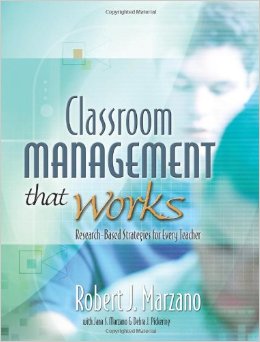Last week, Classcraft co-founder Shawn Young presented a special webinar on effective classroom management techniques and how they led to Classcraft’s successful game design. Watch the full webinar recording here.
Young shared his personal experiences from his 10 years of teaching high school physics. He assessed “the good, the bad, and the ugly” about his early approach and how that led him to rethink his own classroom management.
In this four-part series, we’ll look at the four most effective classroom management strategies as identified in the book Classroom Management That Works: Research-Based Strategies for Every Teacher (a meta study of over 300 research studies into classroom management) and how Classcraft uses them to create meaningful changes and positive culture in the classroom.
Strategy: Rules and Procedures
 According to Young, teachers who are good at rigor and relationship are the most successful at classroom management.
According to Young, teachers who are good at rigor and relationship are the most successful at classroom management.
The simplest classroom management strategy is setting rules and procedures for general student behavior, starting the day, group work, and any other aspect of the classroom. According to Classroom Management That Works, both “a rule identifies general expectations or standards, and a procedure communicates expectations for specific behaviors.” One rule might be “respect others and their property,” while a teacher could establish a procedure for turning in late work, for instance.
By creating these rules and procedures, teachers can make sure that kids know what they’re supposed to be doing at each specific time. This helps them to stay on task. The younger the learners, the more important this strategy is.
“The important thing is not necessarily the nature of those rules,” Young said. “As we know, all teachers are different, and when we look at our colleagues we see that they each have their own teaching styles and different classroom management styles. … The important part is for kids to know what those rules are and for you to act upon them.”
Getting students involved can facilitate this process. “When you give students a voice, they take ownership of those rules,” Young said.
For example, in Classcraft’s ongoing project to prevent bullying in schools, one teacher asked their students to identify what behaviors might contribute to an atmosphere where bullying could thrive and what behaviors might help defuse it. “The kids came up with all of the right behaviors on their own,” Young said. “They’re really in tune with what’s going on in the classroom and how it should be running.”
How this works in Classcraft
Rules and procedures: Students earn Experience Points (XP) for good behaviors and lose Health Points (HP) for negative behaviors. The teacher can customize the presets to be whatever behaviors they want to encourage or discourage. This sets clear expectations and define the rules of the classroom.
The random events are a great way to create procedure for the beginning of the day and to generate excitement. These can be positive, negative, or totally silly. For example, a student (or teacher!) might have to sing a song, or the whole class might have to speak in pirate accents for the whole day.
Getting students involved: Additionally, teachers can include students by asking for their input on the presets, powers, events, and sentences (consequences for losing all their HP).
When students feel like they’re helping to shape the experience, they’re more likely to be invested in it. This greatly helps with buy-in in the class.


